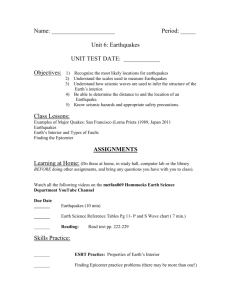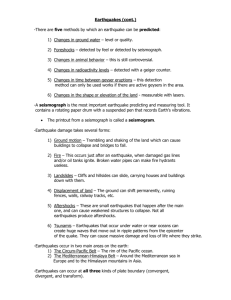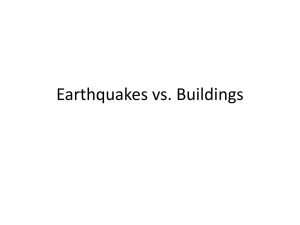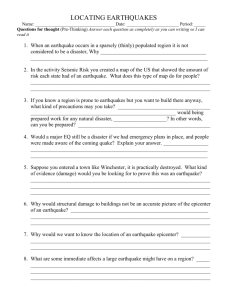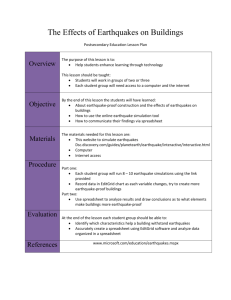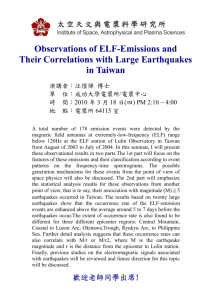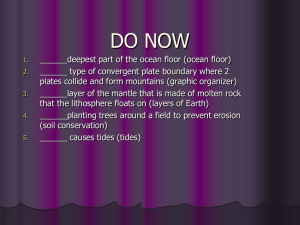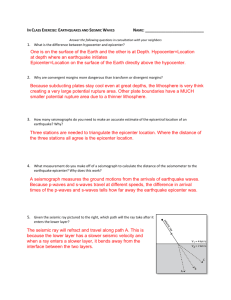here
advertisement
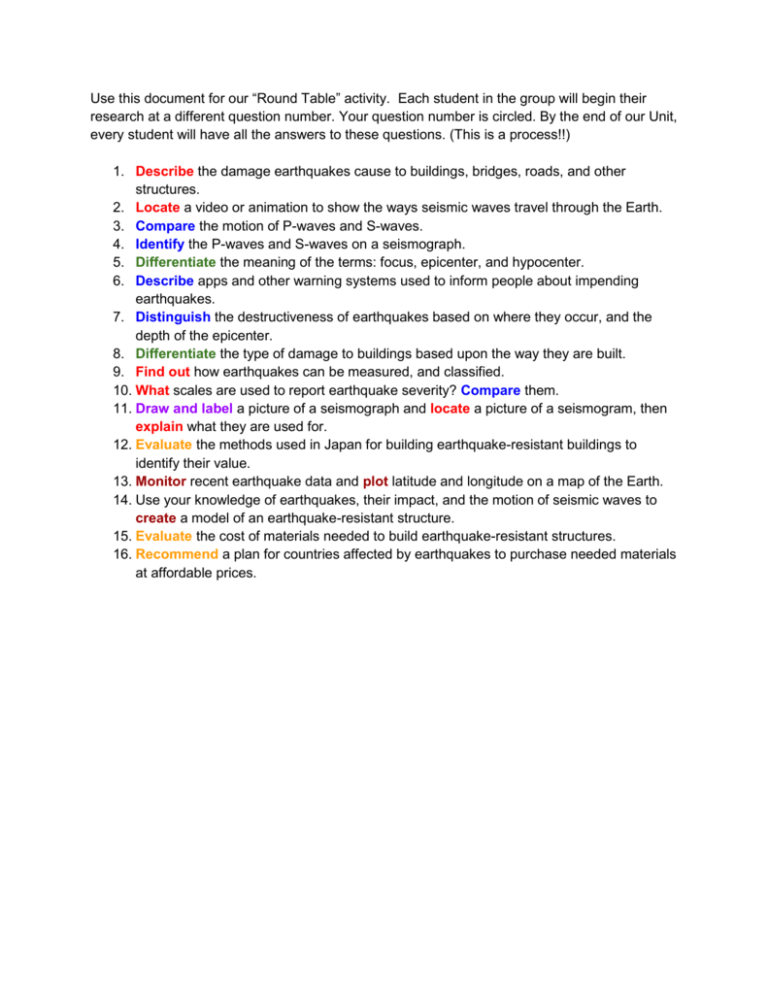
Use this document for our “Round Table” activity. Each student in the group will begin their research at a different question number. Your question number is circled. By the end of our Unit, every student will have all the answers to these questions. (This is a process!!) 1. Describe the damage earthquakes cause to buildings, bridges, roads, and other structures. 2. Locate a video or animation to show the ways seismic waves travel through the Earth. 3. Compare the motion of P-waves and S-waves. 4. Identify the P-waves and S-waves on a seismograph. 5. Differentiate the meaning of the terms: focus, epicenter, and hypocenter. 6. Describe apps and other warning systems used to inform people about impending earthquakes. 7. Distinguish the destructiveness of earthquakes based on where they occur, and the depth of the epicenter. 8. Differentiate the type of damage to buildings based upon the way they are built. 9. Find out how earthquakes can be measured, and classified. 10. What scales are used to report earthquake severity? Compare them. 11. Draw and label a picture of a seismograph and locate a picture of a seismogram, then explain what they are used for. 12. Evaluate the methods used in Japan for building earthquake-resistant buildings to identify their value. 13. Monitor recent earthquake data and plot latitude and longitude on a map of the Earth. 14. Use your knowledge of earthquakes, their impact, and the motion of seismic waves to create a model of an earthquake-resistant structure. 15. Evaluate the cost of materials needed to build earthquake-resistant structures. 16. Recommend a plan for countries affected by earthquakes to purchase needed materials at affordable prices.
